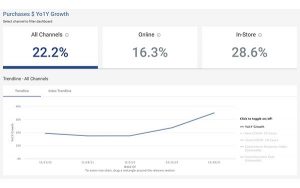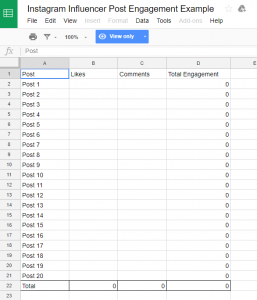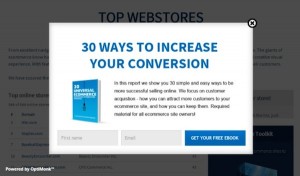With 2014 coming to a close and the New Year right around the corner, you’re probably already looking ahead and thinking of ways to do more business in 2015.
Here at Constant Contact, we’re committed to helping small businesses succeed. And that’s why each year we take a look at what we’ve seen in the small business landscape and offer our predictions for the year ahead.
As you might expect, mobile technology — like smartphones, tablets, and even smart watches — will continue to have a major influence on how you run your business and how new customers find you in 2015. And while this will certainly come with some challenges, we also expect small businesses to have a real advantage in the New Year.
Without further ado, here are Constant Contact’s small business predictions for 2015:
1. Small Business will “win” the local war
In a web-based world — before a majority of consumers were walking around with a smartphone in their pocket — it was quite difficult for small businesses to match their larger competitors when it came to standing out and getting found online.
But in 2015, the growing influence of mobile on platforms like search engines and social media, will shift the advantage in favor of small business.
The merging of social and mobile channels is allowing small businesses to grow in new ways. Mobile technology continues to be creatively woven into social networking, such as photo geo-tagging on Instagram and Facebook’s “Nearby Friends” feature.
More than 70 percent of social activity is happening on a mobile device and the idea of “nearby” is embedded into every experience, making it possible for small businesses to capture the attention of consumers as they walk by their storefront.
2. Small Businesses will become “real time” marketers
With social media channels such as Facebook limiting organic reach for businesses in favor of promoted posts, small businesses will continue to rely heavily on email, which is emerging as the one channel a small business can truly own.
As a result, we expect more small businesses will take advantage of the ability to manage their contact list and target consumers in the place they go every day — the inbox. They will also take advantage of the fact that more than half of all emails are now read on a mobile device, making email one of the best examples of how small businesses can adapt to an increasingly mobile world.
That’s not to say social media won’t have a role in helping small businesses reach their audience with timely information. Sites like Facebook and Twitter will still be used to share real-time updates and make personal connections with local consumers, along with mobile-first networks like Instagram.
Unlike a national store, which may be removed from the local community, small businesses have the ability to be spontaneous and share timely content on what’s going on right now. This could be a restaurant sending a last-minute email coupon to drive business on a slow night. Or it could be a retail agent posting a photo on Twitter of a recently-listed property.
With their ability to be nimble and develop authentic customer relationships, small businesses can achieve greater context with their mobile marketing — and context (delivering the right message, at the right time, to the right people) will rule the day.
3. Device technology will crack the “context” code
While some mobile device screen sizes shrink (think smart watches and other wearables) user context will grow.
Smartphone apps like Google Now (the Google equivalent of Siri) will further advance local search with predictive search capabilities, sharing results to users by taking into account user location, previous searches, and social circles/reviews to deliver search results outside of a typical search listing.
These advances, coupled with increased usage of wearables, make local SEO all the more important for small businesses. They will need to have a mobile version of their website and ensure that their information is listed accurately across search engines, as well as ratings and review sites.
4. Small businesses will hold off on mobile payments
This is one area of the mobile arena where small businesses will take a “wait and see” approach in 2015.
While there is a lot of buzz around the transformative potential of Apple Pay and Google Wallet, the reality is that both need adoption by small businesses to be successful.
Small businesses account for more than half of all U.S. sales and they are not typically early adopters of new technologies.
Square, PayPal Here, Intuit Go Payment, and others have made it very easy for small businesses to take credit cards, so until customers start demanding the convenience and added security of mobile payment services, or the impact of pending late 2015 legislation shifting the liability for fraudulent credit card purchases from the card issuer to the merchant is felt, small businesses will stick with the payments methods they currently have.
What questions do you have for 2015?
As you look ahead to the New Year, where do plan to make improvements? Are you planning to do more on social media? Will mobile be the next challenge you decide to tackle?
We’re here to help! Post your questions in the comments below.
Business & Finance Articles on Business 2 Community
(367)






